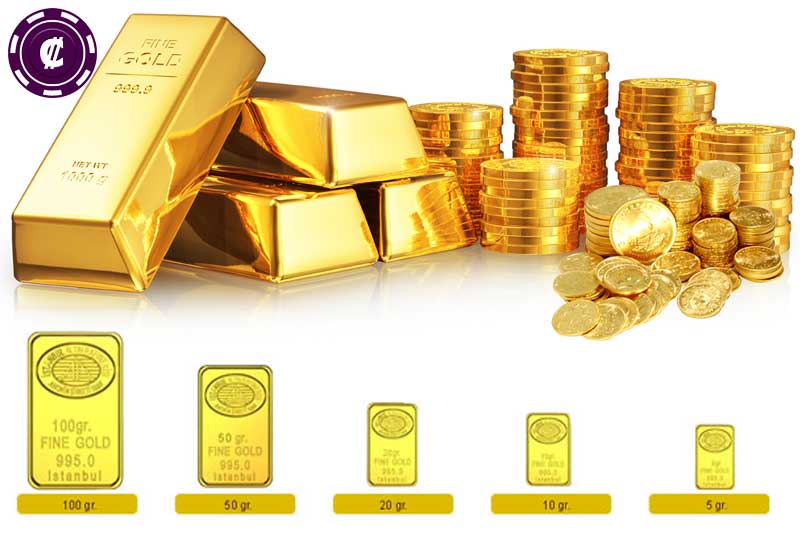Gold as an investment
Of all the precious metals, gold is the most popular as an investment. Investors generally buy gold as a way of diversifying risk, especially through the use of futures contracts and derivatives. The gold market is subject to speculation and volatility as are other markets. Compared to other precious metals used for investment, gold has the most effective safe haven and hedging properties across a number of countries.
Gold price
Gold has been used throughout history as money and has been a relative standard for currency equivalents specific to economic regions or countries, until recent times. Many European countries implemented gold standards in the latter part of the 19th century until these were temporarily suspended in the financial crises involving World War I. After World War II, the Bretton Woods system pegged the United States dollar to gold at a rate of US$35 per troy ounce. The system existed until the 1971 Nixon Shock, when the US unilaterally suspended the direct convertibility of the United States dollar to gold and made the transition to a fiat currency system. The last currency to be divorced from gold was the Swiss Franc in 2000.
Since 1919 the most common benchmark for the price of gold has been the London gold fixing, a twice-daily telephone meeting of representatives from five bullion-trading firms of the London bullion market. Furthermore, gold is traded continuously throughout the world based on the intra-day spot price, derived from over-the-counter gold-trading markets around the world (code “XAU“). The following table sets out the gold price versus various assets and key statistics at five-year intervals.
Investment vehicles
Gold bar: A gold bar, also called gold bullion or a gold ingot, is a quantity of refined metallic gold of any shape that is made by a bar producer meeting standard conditions of manufacture, labeling, and record keeping. Larger gold bars that are produced by pouring the molten metal into molds are called ingots. Smaller bars may be manufactured by minting or stamping from appropriately rolled gold sheets. The standard gold bar held as gold reserves by central banks and traded among bullion dealers is the 400-troy-ounce (12.4 kg or 438.9 ounces) Good Delivery gold bar. The kilobar, which is 1000 grams in mass (32.15 troy ounces), is the bar that is more manageable and is used extensively for trading and investment. The premium on these bars when traded is very low over the spot value of the gold making it ideal for small transfers between banks and traders. Most kilobars are flat, although some investors, particularly in Europe, prefer the brick shape. Asian markets differ in that they prefer gram gold bars as opposed to Troy ounce measurements. Popular sizes in the Asian region includes 10 grams, 100 grams and 1000 gram bars.
Gold coin: A gold coin is a coin that is made mostly or entirely of gold. Most gold coins minted since 1800 are 90% gold or 22kt (11/12 fineness), but some have lower or higher content such as the 24 karat Canadian Maple Leaf bullion series. Gold in coins is typically alloyed with silver, copper or both.
Traditionally (up to about the 1930s), gold coins have been circulation coins, including coin-like bracteates and dinars. Since recent decades, however, gold coins are mainly produced as bullion coins to investors and as commemorative coins to collectors. While also modern gold coins are legal tender, they are not observed in everyday financial transactions, as the metal value normally exceeds the nominal value. For example, the American Gold Eagle, given a denomination of 50 USD, has a metal value of more than 1,000 USD.
Gold rounds : Gold rounds look exactly like gold coins but they have no currency value. They range in similar sizes as gold coins and come in 0.05 troy ounce all the way up to 1 troy ounce. Unlike gold coins, gold rounds have no additional metals added to them for durability purposes and do not have to be made by a government mint, which allows the gold rounds to have a lower overhead price as compared to gold coins. On the other hand, gold rounds are not as collectible as gold coins.




